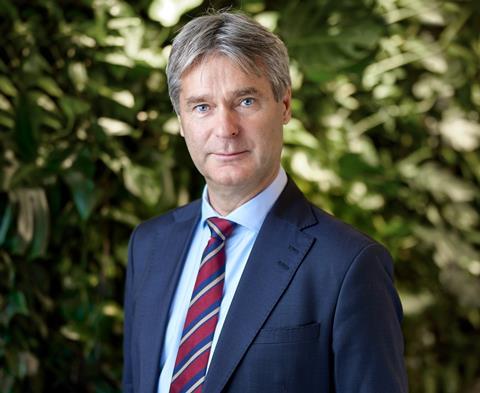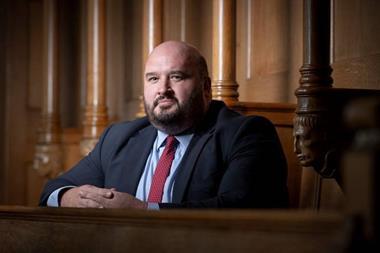Portfolio tactics such as moving equity exposure towards value stocks and reducing interest-rate sensitivity are being employed by some Nordic pension funds amid inflation rates of around 10%, with others sticking to real asset-boosting plans.
From Reykjavik to Helsinki, pension funds have told IPE how they are now positioning portfolios, and just how quickly they expect consumer price rises to level off.
In 2022, because of high inflation levels, Finnish pension insurance company Veritas reduced fixed income duration risk and moved towards more illiquid credit and more complex structures to get yield with lower interest-rate sensitivity, according to its chief investment officer.
“We have also moved the listed equity portfolio towards less rate-sensitive sectors and value-type stocks and reduced the interest-rate sensitivity of the equity portfolio as well,” Kari Vatanen told IPE.
“Our alternatives portfolio is also tilted towards diversifying alternatives and tail risk hedges and they have given a good positive support during 2022,” he said.
Those changes have been semi-tactical, Vatanen said, adding that Veritas is ready to increase the rate sensitivity and remove hedges after the hiking cycle of major central banks.
“Our strategy is to be dynamic in our risk and asset allocation,” he said.
In Iceland, ISK403bn (€2.6bn) pension fund Frjálsi has also adjusted its equity mix because of high inflation levels, according to Eva Rós Birgisdóttir, expert in the institutional asset management department of Arion Bank, manage of the Reykjavik-based pension fund.
“Before the global pandemic, Frjálsi’s bond portfolio was already inflation-linked for the most part so there have not been made any major changes to our investment strategy,” she said.
“Regarding the equity side, we decreased the weighting of growth stocks as they tend to be more sensitive to changes in interest rates,” said Birgisdóttir.
Preparing for high inflation
in Sweden, national pensions buffer fund AP4 has for some time included a slightly higher level of inflation in the scenario analysis used to derive its long-term asset allocation, according to chief investment strategist Per Hammarlund.
“That being said, the inflation numbers we saw during 2022 were significantly higher than expected, and as a result we have approached yield levels that are closer to our long-term targets much more quickly,” said the strategist who only joined the Stockholm-based institutional investor this month.
“To prepare for a scenario with higher inflation, we have been gradually increasing our allocation to real assets that should be able to compensate for higher inflation levels, and shortened the duration in our interest-rate portfolios since 2018,” he said.
In a similar vein to Frjálsi and Veritas, AP4 has had more focus on the defensive end of the equities spectrum recently, in the light of steeply-rising consumer prices.
“During 2022 we also introduced a new allocation to defensive equities, that we believe should be more robust to an investment regime with higher inflation compared to a broad equity market exposure,” said Hammarlund.
Exposure to real assets
In Norway, municipal pensions heavyweight KLP also sees assets such as property and infrastructure as a boon amid a surge in consumer prices.
“KLP has for a long time sought to get exposure to real assets to dampen the effect of inflation shocks,” said Harald Koch Hagen, senior vice president, risk and asset allocation at the Oslo-based investor.
“We do not see a need for a change in strategy,” he added.
At AP7, the SEK855bn (€76.8bn) default provider in Sweden’s Premium Pension System, chief executive officer Richard Gröttheim told IPE the fund had not taken any investment strategy steps due to higher inflation.

“We have decreased the risk in the equity fund already some years ago because of the high valuation in the stock market,” he said.
Regarding the impact of inflation on the fund, Gröttheim said that as a fully-funded pension fund, AP7 has no liabilities. “On the asset side we are a global equity fund with real assets so in the long run that will protect for the inflation,” he added.
However, current high levels of inflation would affect economic policy for quite some time, said the AP7 CEO, who is stepping down in a few months after 12 years in the top role.
A diverse bunch
Back in Finland, the State Pension Fund, VER, is making no major investment strategy changes due to inflation, and the minor increases that are being made in all private asset classes will continue to take place, according to the fund’s CEO Timo Löyttyniemi.
“But this would have taken place anyhow,” he said.
As for the impact of higher interest rates – resulting from higher inflation – on private assets, Löyttyniemi said that is still unknown and would be seen in the course of this year.
“Some assets may be overly leveraged,” he commented, adding that the impact of this would typically be seen later on.
On the positive side, he said higher interest rates did make bond investments more attractive, which was considered a healthy phenomenon for the markets.
Being a diverse bunch, the Nordic region’s largest pension funds have different obligations and ambitions when it comes to protecting scheme members from inflation in the payment phase – or none.
Denmark’s largest pension fund ATP made the stark admission earlier this month that the DKK676.9bn (€91bn) statutory pension scheme is having to give up, in the short term, in its bid to secure the real value of the pension payments – because with inflation running at 8.7% in December in Denmark, this was an impossible task.
But, chief risk officer Kim Kehlet Johansen said in an interview with financial daily Børsen, ATP still aimed to succeed in that stated ambition over time.
In Finland, the private sector earnings-related pension system is a partly-funded pay-as-you-go system, where pensions are linked to inflation on the system level, so pension payments increase over time.

Pension contributions are linked to wage inflation, so the system remains in equilibrium if wage inflation equals CPI over a longer period, Vatanen explained.
The funded part of the system works as a buffer fund to finance changes, such as demographics, over time, he said.
“As a pension insurance company, our task is to keep the real returns of the funded part positive over the longer run to maintain our solvency and the system balanced,” Vatanen said.
In Iceland, Birgisdóttir said inflation did indeed affect pension provisions for scheme members, since pension liabilities were fully inflation-linked, but the investment portfolio was not.
“Although the bond portfolio of Frjálsi Pension Fund is mostly inflation-linked similarly to Iceland’s bond market historically,” she said.
However, Birgisdóttir believes Icelandic pension funds and stakeholders are better equipped to cope with inflation than counterparts elsewhere.
“Iceland is in a unique position concerning inflation seeing that we have experienced high levels of inflation before and have gotten familiar with it,” she said.
What’s next?
So, how do Nordic pension funds see inflation developing from this point?
“We expect the headline inflation rate to decline after falling energy prices,” said Vatanen.
But wage inflation had already started in US, he said, and it would probably start rising in Europe during the spring as well, he predicted.
“That supports core inflation staying higher for longer,” he said.
The differences between headline inflation figures in different countries are mainly driven by differences in electricity production and dependency on Russian fossil fuels, he said.
“The Nordics have been relatively independent from those and the growing investments in the renewable energy in the area will help the electricity-driven inflation to come down,” the Veritas CIO said.
Birgisdóttir said Arion Bank assumed Icelandic domestic inflation had peaked at 9.9%, year-on-year, last July, but that the recent decline in the figure had been slow.
“Iceland is unique in the way that it is not sensitive to energy prices because it has abundant hydroelectric and geothermal energy resources and is at the forefront in the use of renewable energy resources,” she said. But rising prices for imported goods were a risk factor for domestic inflation, she added.
In Sweden, Hammarlund sees inflation peaking in January or February at just below 13% year-on-year before moderating gradually to around 4.0% by the end of 2023.
Swedish price developments were following a similar path to other EU countries and the US, he said, albeit with a lag and a higher expected peak.
“Another difference for Sweden – a small, open economy – is the weak krona, which may keep inflation higher for longer if it depreciates further,” he said, adding that AP4 expected the currency unit to strengthen somewhat in 2023, helping keep inflation in check.
Looking ahead, Löyttyniemi said a key point was how inflation and inflation expectations would impact interest rates, both short and long term.
“There is still a chance and high hope that inflation is only partly persistent but mainly transitory,” he said.
To read the digital edition of IPE’s latest magazine click here
























